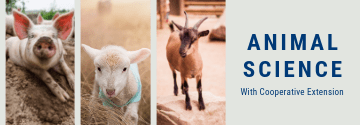In Parts I and 2, I covered testing the soil in the field in which you plan to establish a new pasture or plan to do a total renovation and species selection. Depending on how close you are to planting and whether you will be working the soil or planting using a no-till drill, it’s probably time to recheck soil pH and fertility levels in the field to be planted or renovated. The final soil test should be taken approximately 6 to 9 months after the earlier limestone application. This should be enough time for previously applied lime to react with both the active acidity (hydrogen ions in soil solution) and the reserve acidity (hydrogen and aluminum ions on the clay and organic matter cation exchange sites) and the soil pH to be reaching an equilibrium state. In this way if another smaller application of limestone is needed to move the soil pH slightly higher, the lime can be applied and worked in the soil, assuming some type of tillage for incorporation of the limestone. In no-till situations, the process of adjusting the soil pH takes much longer and should be started as much as two or three years in advance of seeding or renovation since lime moves downward through the soil at about one inch per year.
Now that the soil fertility requirements have been completed, it’s on to the planning and planting process. One of the biggest challenges these days, especially if you have a small number of acres in the field, is finding someone with equipment the right size to fit the field and a willingness to do the job in a timely fashion. Of course even if you’re lucky enough to find the equipment and operator, cost is going to be a critical factor when making the decisions of what parts of the plan are actually doable. Another factor that has become more of a challenge in recent years is the availability of forage seed of the selected species and variety. Many forage seed production fields have been converted to row crop production and in some locations restrictions on burning seed production fields have allowed disease issues such as ‘choke’ to reduce forage seed yield potential.
In planning the whole procedure, your time will be a valuable asset. With high prices, limited seed supplied, and challenges in finding equipment and help to fertilize, lime, control weeds, and plant seeds, the time you take to shop around should pay big benefits. July and August are the time to do these chores since the fall planting season is right around the corner.
For planting date, forage agronomists often list from mid-August through September as being the time to plant as long as soil moisture is adequate. Soil moisture for many hay producers and grazers in the state and region really will be at critically low levels for much of August. This can extend late into September due to the drought and hot weather conditions we usually experience during July and August. With all our pre-planning and planning activities, the final decision on when to plant and even whether to plant on time will be determined by the weather conditions during August and September. You may be tempted to plant as soon as the field receives the first rainfall in the planting window but you should keep in mind that if the deeper layers of soil are deficient in moisture the new planting will likely fail if fall turns dry. Use a shovel or your soil probe to test the soil for moisture at the 6 to 12 inch depth. If the field hasn’t received enough rainfall to supply this soil depth with at least some water, a new planting will be very much at risk if rain events do not continue from planting until winter dormancy takes hold. Only you know the amount of risk you are willing to take to establish the new seeding this season and none of us know what the future weather will be.
What if enough rain to supply water to the deeper soil layers doesn’t fall until very late in September? Certain species, such as low alkaloid reed canary grass, require a specific amount of time between planting and first frost (six weeks minimum for reed canary grass) but almost all species will not only yield less the following year but take a lot more time to reach full establishment if planted late. Again, the hay producer or grazer must evaluate the amount of risk they are willing to take on when deciding to plant after September.
You should maintain frequent contact with your fertilizer/lime dealer, seed dealer, equipment supplier, and others who will be helping you with the process of planting the new pasture or hay field. If you will be using equipment provided through the county conservation districts, be sure to get your name on the list as early as possible since many folks may want to seed about the same time when moisture conditions become favorable.
This article was submitted by Dr. Richard Taylor, Extension Agronomist, University of Delaware. Dr. Taylor can be reached at rtaylor@udel.edu






